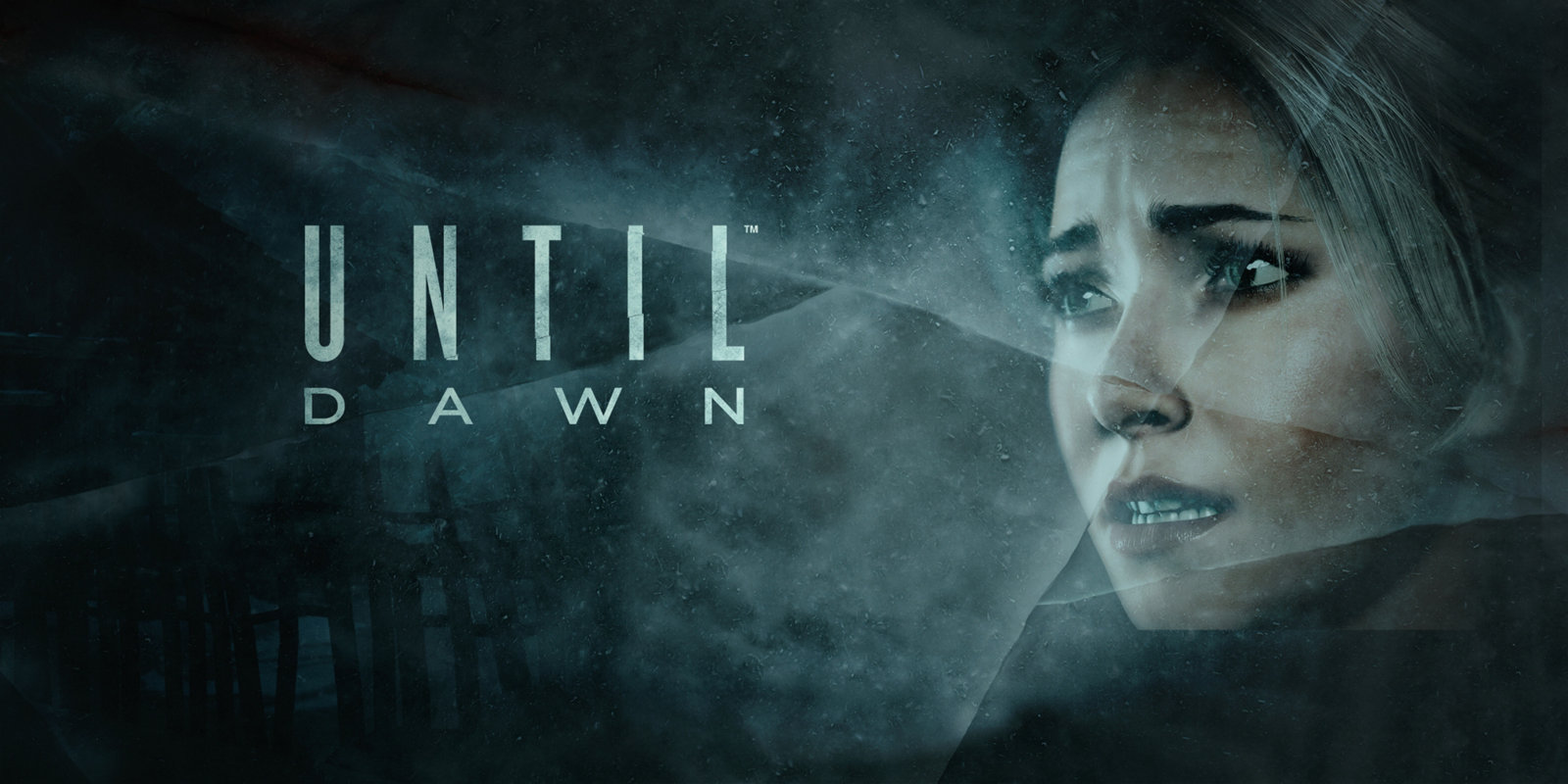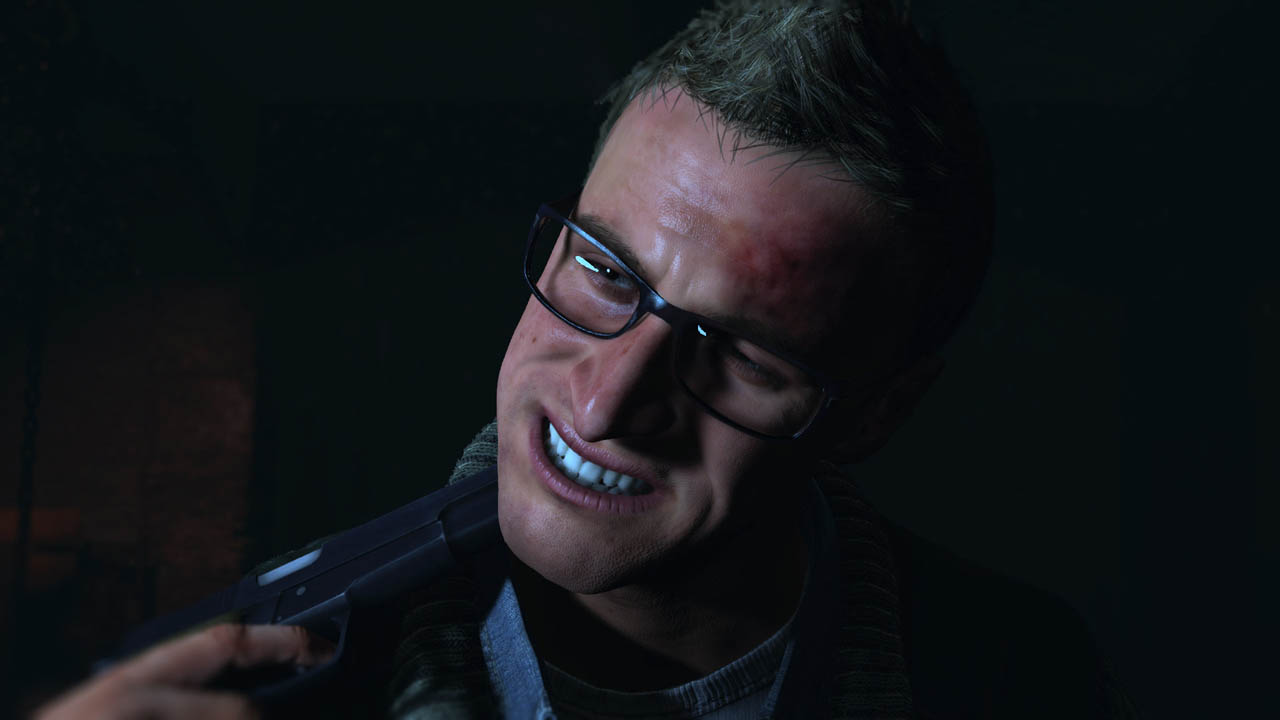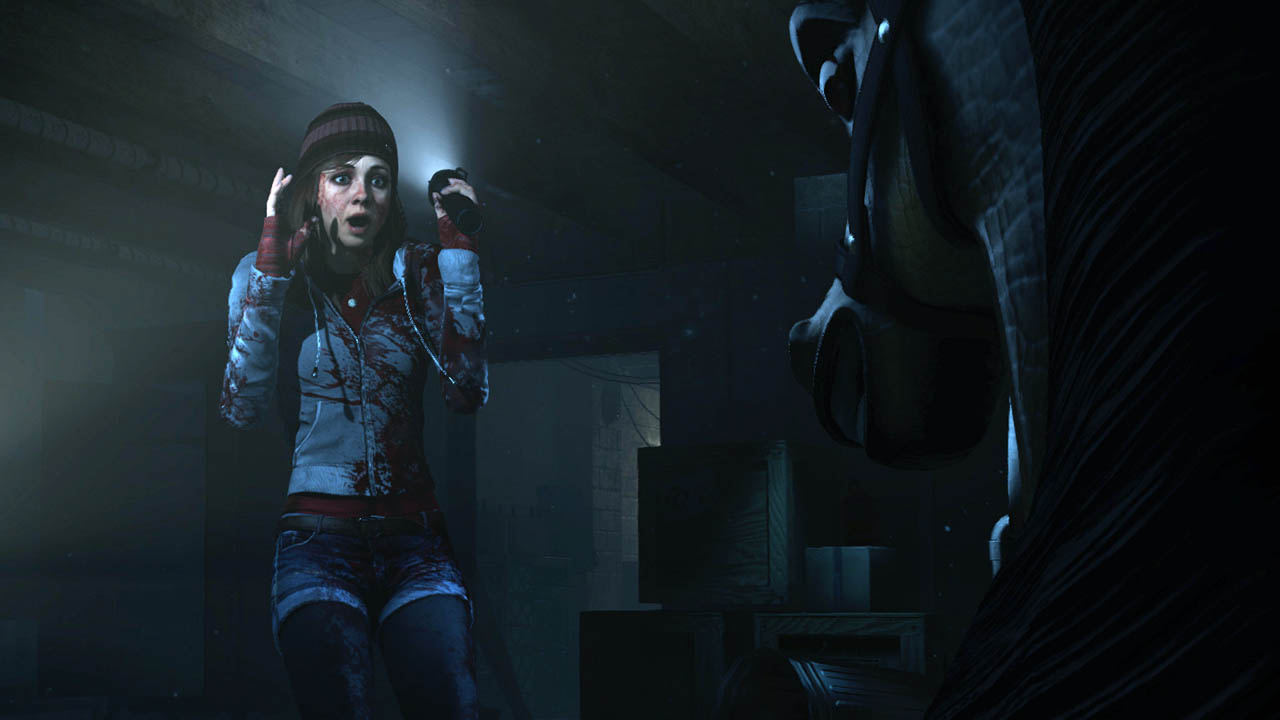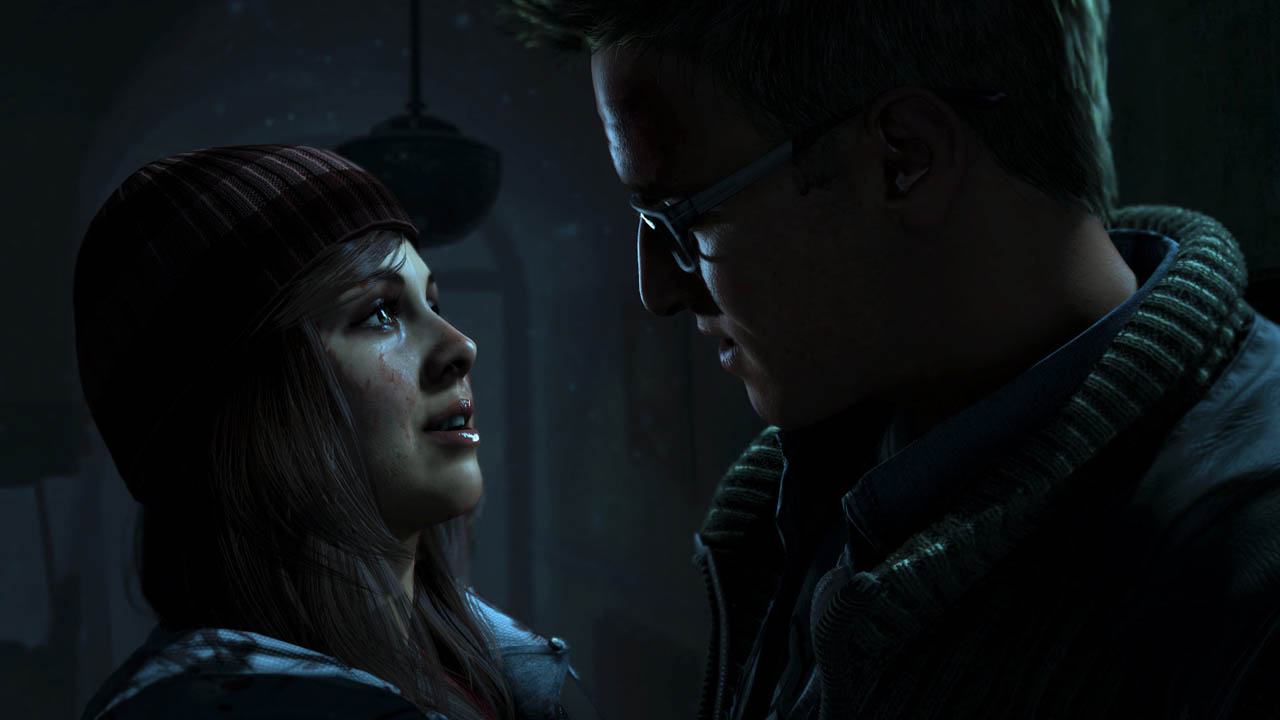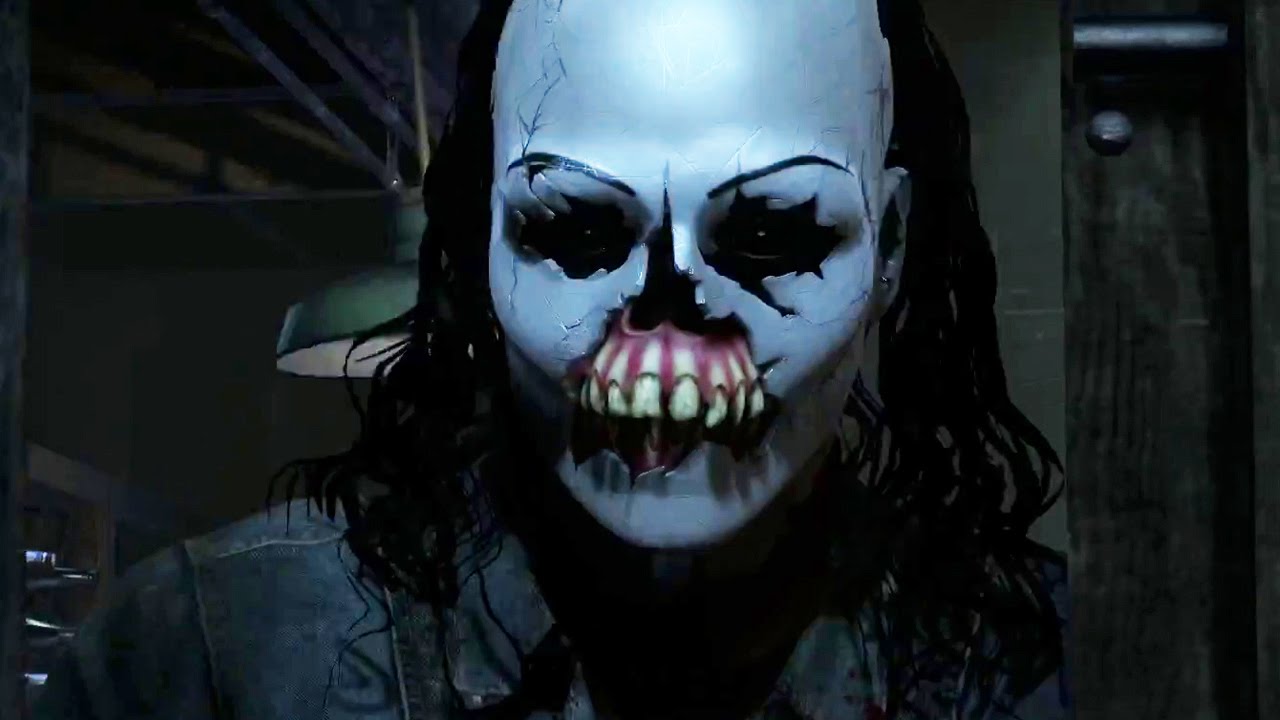We’ve all done it, screamed at the screen as our teenage heroes make the worst decisions possible, ending in their demise at the hands of a demon with knives for fingers, a hockey-masked psychopath or the vengeful spirit of an ancient evil.
PlayStation 4 exclusive, Until Dawn, puts players in the shoes of a group of teenagers living the worst (and possibly last) night of their lives. Your decisions are their decisions. Finally, we are going to be able to put our money where our mouths are and survive the night.
This generation of console releases seems to be dominated by games that seek to impart a deep narrative experience, the technology is finally here to create player experiences that transcend what we would once expected from a video game. It seemed fitting, following on from my recent play-through of the fantastic Everybody’s Gone to Rapture, I found myself on another story-driven adventure, this time one with a teen-slasher movie plot that wouldn’t be out of place on the shelves of a 1980’s video library.
It’s been almost a year since I first had a go on Until Dawn at a late-night PlayStation event on the eve of last year’s EB Expo. I found the demo intriguing, far more interesting that the massively hyped Evil Within being shown off in the next demo pod.
Until Dawn has been a long time coming, originally intended to be a PlayStation Move title on PS3, the game disappeared for a while and questions raised as to whether it would ever see release. What was actually happening was that developer Supermassive Games was retooling the game for the PS4.
The game starts with a group of friends staying at a Blackwood Pine lodge on Mount Washington, British Columbia for their annual winter vacation. The lodge is owned by the parents of Josh and his sisters Hannah and Beth. The when a spiteful joke goes wrong an upset and embarrassed Hannah runs into the dark wood, with her sister chasing after her. They are never seen again.
A year later, at Josh’s request, the group meet up at the isolated lodge once more to remember their missing friends. It’s not long before they find themselves hunted by a twisted psycho and fighting for their lives. But there seems to be more at play, and a mystery going back over fifty years.
The story borrows from a number of different horror movies in a manner that could be homage or just lazy writing. Either way, the events can sometimes be painfully predictable. I found myself aware of exactly what was going on long before the characters. Saying that, sometimes it does work to good effect, adding to the suspense by giving the player foreshadowing that the characters don’t have.
Players take control of all eight of the main characters at different times throughout out the game, which is set over one night. Movement is, for the most part, at walking pace and controlled with the left analogue stick. The light source touch, lamp etc. is controlled with the right stick. The game controls the camera, which can be awkward at times, but I’ve seen worse.
As Until Dawn is very cinematic, there are a lot of cut-scenes. These are often punctuated with decisions like take the slow easy route or the quick dangerous route. What usually follows then is a series of quick time events requiring the right button presses within the time limit. Failure could set the character back or result in his or her demise.
Decisions have consequences, obvious or otherwise, many of which involve the relationships between the characters. At pivotal moments a butterfly appears on the screen to signify an important change in the story due to the player’s actions. Due to this branching narrative, everyone’s experience with the game is going to different.
As well as making the right decisions and being successful in the resultant quick time button presses, players will need to find clues to uncover the mysteries of Blackwood Pines. Without the right clue, certain actions will not be available, with potentially disastrous results. There are also a number of wooden totems which offer characters a glimpse into their potential future.
No matter how you play the game and what choices you make, Until Dawn is going to provide you with a great experience. It’s like being an active participant in a horror movie, it’s up to the player to choose the action of the characters. You can make them do the usual stupid things and end up dead or act smart.
At the end of my play-through all of my group bar two were dead. If I’d played smarter, not failed so many of those quick time events and made some better choices, apparently, everyone could have walked out alive.
The similarities between Until Dawn and one of David Cage’s games like Heavy Rain and Beyond: Two Souls are immediately apparent, from the use of well-known actors to the decision making and effect on the game.
The game features a few familiar faces who have provided the facial motion capture and their vocal talents. The most familiar are Hayden Panettiere, the cheerleader from Heroes, Peter Stormare, a fella who turns up in everything from Armageddon to Prison Break and Brett Dalton, Ward from Agents of S.H.E.I.L.D.
The facial animation is flawless, the developers almost managing to avoid the uncanny valley that makes CG faces look so odd. The walk animations, on the other hand are very wooden and awkward. Characters only seem to be able to move about normally when the console takes over for a cut scene. All in all, though, the characters are, for the most part, some of the most life like that I’ve seen in a game, looking almost indistinguishable from their real-life counterparts.
The environments are very detailed well designed and make for some very eerie locations from the dark snowy mountain top, to a spine-chilling abandoned sanatorium and even an old mine.
The game’s frame rate is jarring. But, there’s no need for a 60fps experience with such a non-twitch game and so, like Everybody’s Gone to Rapture, Until Dawn puts graphical fidelity over frames per second. Even so, whilst the graphics are very, very good, apart from the facial animation, they never really manage to get anywhere near being photorealistic, which possibly a hold-over from its PS3 origins.
Overall, I really enjoyed Until Dawn. It’s not perfect, but it does successfully channel the teen horror genre, right up to the protagonists making stupid choices in scary places.
Playing the game alone at night with headphones on nearly caused a few brown trouser incidences. Until Dawn is a game that likes to make you jump, most of the time over nothing, but on the odd occasion when something really freaky happens it totally takes you off guard.
As clichéd as it is, the story is very good. It does, however, start to suffer as it begins to offer explanations. It becomes a bit of a mess, as if they developers had several ideas for the outcome, couldn’t decide which to run with and, instead, decided to keep it all in.
Replayability is a bit of a question-mark for me. The game does, by its end, put all its cards on the table, revealing everything to the player. But, with everyone surviving being the ultimate goal, I can see some gamers taking up the challenge to try achieve exactly that- which is going to take a few attempts.
As well as the game, the package comes with a full suite of DVD-style extras that slowly unlock as the game is played. Interviews and featurettes reveal the production process involved create Until Dawn.
Until Dawn is a game that I’d recommend to anyone after something a bit different. The frame rate sags every now and again and the graphics are good but could be better. The story, whilst great, does have some issues with pacing. Pushing all of that to one side, you have a game that’s got a lot of heart, offering up an interactive experience that you are going to remember.
I hope to see many more games like this in the future.

